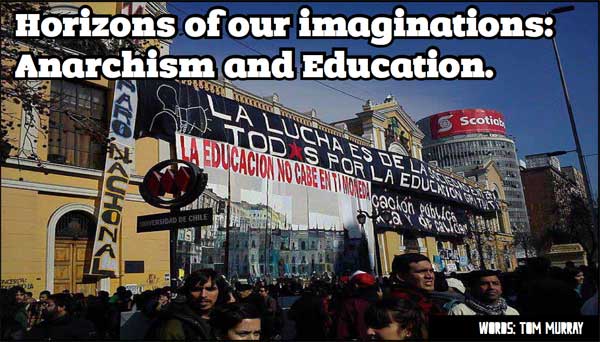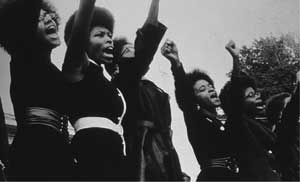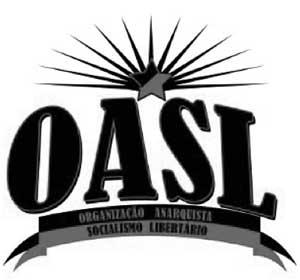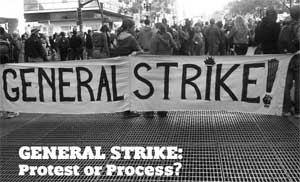Over 30 years of anarchist writing from Ireland listed under hundreds of topics
Magazine
Horizons of our imaginations: Anarchism and Education
Tom Murray looks at anarchist principles of education and argues that autonomous, co-operative learning is central to our finding new ways of challenging authority and dis- covering freer, more equal ways of being in the world.

Interview with an organiser from the Quebec 2012 mass student strike & movement.
Having recently completed a seven stop all Ireland speaking tour, Vanessa Gauthier Vela answers some questions on the nature of the 2012 Quebec student uprising. This interview is a longer version of the one that appeared in the print version of Irish Anarchist Review 8. Audio from Vanessa's talks in Ireland will also be available soon.
1. Can you briefly summarise the struggle of 2012 for our readers?
Irish Travellers - Apartheid, Irish Style.
 Solidarity is unity (as of a group or class) that produces or is based on community of interests, objectives, and standards.[1] It refers to the ties in a society that bind people together as one.
Solidarity is unity (as of a group or class) that produces or is based on community of interests, objectives, and standards.[1] It refers to the ties in a society that bind people together as one.
A good barometer of any society is how it treats people who are the most socially disadvantaged. In other words we are talking about people on the edge or on the bottom of this heap. In Ireland we have a pyramid structure which has 1% of individuals at the top owning 34% of the wealth. At the broad base of this triangle we have people who are treated appallingly, who are discriminated against, stigmatized and ultimately written-off before they reach the age of adulthood. People who are never given a chance; many Travellers find themselves here.
Beyond the "solidarity of the same” - Solidarity, class and empowerment
Solidarity is a word that fills the songs, slogans and even names of movements in the anarchist, socialist and left tradition. Yet the meaning of the term is often assumed to be common knowledge that needs no further explanation or enquiry. In line with the theme of this issue of the Irish Anarchist Review this article aims to look a little deeper into the history and meaning of this term and how it should inform our activity today and the problems we face. Particularly in situations when equal empowerment between all the participants in the solidarity relation cannot be assumed as a starting point. Clearly solidarity, class and equality are all in some way intertwined, but the question is how, exactly?

The Politics of Voices: Notes on Gender, Race & Class
 As class-struggle anarchists dealing with the relations between gender, race and class, we must, in theory and practice, pick a path between two pitfalls. On one side is economic reductionism – the reduction of all political questions to the social relations of production – which erases the perspectives and struggles of women, queers and people of colour; submerges their voices within an overly generalised class narrative, in which the idealised Worker is implicitly white heterosexual and male; or consigns their struggles to a secondary importance compared to the “real struggle” of (economic) class against class. On the other is a stultifying and inward-looking liberal-idealist identity politics, concerned fetishistically with the identification of privilege and the self-regulation of individual oppressive behaviour to the (near) exclusion of organised struggle, which, while amplifying the voices of the marginalised, consigns them to an echo chamber where they can resonate harmlessly.
As class-struggle anarchists dealing with the relations between gender, race and class, we must, in theory and practice, pick a path between two pitfalls. On one side is economic reductionism – the reduction of all political questions to the social relations of production – which erases the perspectives and struggles of women, queers and people of colour; submerges their voices within an overly generalised class narrative, in which the idealised Worker is implicitly white heterosexual and male; or consigns their struggles to a secondary importance compared to the “real struggle” of (economic) class against class. On the other is a stultifying and inward-looking liberal-idealist identity politics, concerned fetishistically with the identification of privilege and the self-regulation of individual oppressive behaviour to the (near) exclusion of organised struggle, which, while amplifying the voices of the marginalised, consigns them to an echo chamber where they can resonate harmlessly.
Capital’s Shadow - the left's analysis of debt
 Over all the forms of oppression and exploitation we face today, debt is cast like a shadow. In “Capital’s Shadow”, Paul Bowman analyses left wing theorisations of debt and concludes that there is a lack in their understanding of “the real nature of money” and poses the need for a “new research project that analyses not only value, but value at risk over time, and through that the role of credit, risk and the world market in the current global regime of accumulation.”
Over all the forms of oppression and exploitation we face today, debt is cast like a shadow. In “Capital’s Shadow”, Paul Bowman analyses left wing theorisations of debt and concludes that there is a lack in their understanding of “the real nature of money” and poses the need for a “new research project that analyses not only value, but value at risk over time, and through that the role of credit, risk and the world market in the current global regime of accumulation.”
Brazilian anarchism interview on the Crisis, World Cup, Especifismo
 In a wide ranging interview Paul Bowman talked to Felipe Corrêa (FC) a Brazilian anarchist who is member of Organização Anarquista Socialismo Libertário [Libertarian Socialist Anarchist Organization] (OASL) about anarchist orgainising in Brasil, just how global the crisis really is and the forthcoming World Cup.
In a wide ranging interview Paul Bowman talked to Felipe Corrêa (FC) a Brazilian anarchist who is member of Organização Anarquista Socialismo Libertário [Libertarian Socialist Anarchist Organization] (OASL) about anarchist orgainising in Brasil, just how global the crisis really is and the forthcoming World Cup.
Squatting, Urban Politics & the Dublin Housing Action Committee: 1968-71
 The contemporary crisis of capitalism has made markedly visible the relationship between finance capital and property speculation, between the concentrated money-power of bankers and speculators and the shaping of the built environment in our towns and cities.
The contemporary crisis of capitalism has made markedly visible the relationship between finance capital and property speculation, between the concentrated money-power of bankers and speculators and the shaping of the built environment in our towns and cities.
General strike - Protest or process?
 On Merrion square, an evacuation is in progress. Thousands of people scatter in all directions; panic is etched across their faces. To the casual observer, this is a life or death situation. There is however, no crazed gunman, no volcano, no earthquake nor alien invasion. They are fleeing the catastrophe that is the Irish Congress of Unions (ICTU) bank debt protest.
On Merrion square, an evacuation is in progress. Thousands of people scatter in all directions; panic is etched across their faces. To the casual observer, this is a life or death situation. There is however, no crazed gunman, no volcano, no earthquake nor alien invasion. They are fleeing the catastrophe that is the Irish Congress of Unions (ICTU) bank debt protest.
1913 Lockout in Dublin & Larkinism - beyond the myths
 In this article, Donal Ó Fallúin looks briefly at the politics, ideas and misconceptions around the Dublin Lockout of 1913, and shows that the event is much more complex than many have allowed it to be, by attempting to narrow it down to a small event within the nationalist narrative of the period.
In this article, Donal Ó Fallúin looks briefly at the politics, ideas and misconceptions around the Dublin Lockout of 1913, and shows that the event is much more complex than many have allowed it to be, by attempting to narrow it down to a small event within the nationalist narrative of the period.
The 1913 Lockout is a monumental event in the history of the Irish working class. It marks the single greatest confrontation between the forces of labour and capital in Irish history, and the six-month dispute which tore Dublin apart saw a new, militant spirit of trade unionism collide with the force of native capitalism in an unprecedented manner.

